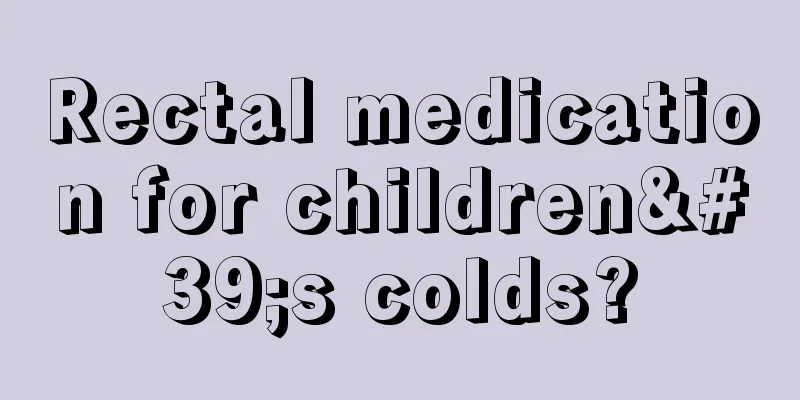What is the latest age for onset of moderate thalassemia?

|
There are many different types of anemia, but anemia in normal people will not have much impact on the body. However, there is a particularly serious anemia called thalassemia that will have a great impact on patients. Thalassemia is usually found in children because it is closely related to genetic reasons. Thalassemia is divided into mild and severe. If it is intermediate thalassemia, at what age will it occur? At what age does thalassemia usually develop? The age of onset of thalassemia varies depending on the severity of the disease. Severe patients may develop anemia, jaundice, hepatosplenomegaly, etc. within a few days of birth, while mild patients may be asymptomatic or have mild anemia. Severe α-thalassemia fetuses, also known as Bart's hydrops fetuses, are caused by the lack of all four α genes and the inability to synthesize α-globin chains. The disease often begins in the second half of pregnancy and most die in utero in the late stages of pregnancy. Even if the pregnancy can be carried to full term, the woman will often die within minutes after birth, and the pregnant woman often has severe obstetric complications such as pregnancy-induced hypertension, placental abruption, eclampsia, convulsions, and massive hemorrhage during or after delivery. Another less severe form of α-thalassemia, also known as hemoglobin H disease, has similar manifestations to major β-thalassemia or slightly milder anemia symptoms. These two types of thalassemia have no special clinical manifestations in the fetal period, can be carried to full-term delivery, and are almost indistinguishable from normal fetuses at birth. The disease usually begins to develop around 6 months after birth. What are the symptoms of thalassemia? Patients with thalassemia do not have any obvious symptoms when they are born. They appear normal like most newborns, and no symptoms of mild thalassemia can be detected at all. But after infancy, anemia, general fatigue, edema, enlarged liver and spleen, and mild jaundice will occur. As people age, they will experience facial changes such as wider distance between eyes and flatter nose, as well as respiratory infections. When taking some medications, acute hemolysis may occur, aggravating symptoms of anemia and even leading to hemolytic crisis, which is life-threatening. Babies with thalassemia major may be stillborn or die soon after birth. There are also some patients whose disease progresses from moderate thalassemia to severe thalassemia, but their symptoms are more severe than moderate ones, and may even lead to death, and they generally cannot survive to adulthood. After reading this, you may have a certain understanding of the age at which thalassemia generally occurs. Of course, you also need to understand its series of symptoms after the onset of the disease. As we all know, genetic diseases are inevitable, which also requires parents to have a certain sense of responsibility. Giving birth to a baby irresponsibly will only bring immense pain to yourself and the baby. Even if there is no family history of genetic diseases, you should check in time, just in case! |
>>: Baby's eyes have red pimples
Recommend
The harm of babies sleeping in cradles
All babies do is eat and sleep. The key point is ...
How to supplement iron deficiency in babies
If parents find that their babies are often cryin...
What to do if your child has itchy eyes
Children's bodies are relatively weak and the...
What to do if a one-week-old child's hands turn red due to freezing
Children's hands and feet must be kept warm i...
What to do if your child has a lot of yellow phlegm
The yellow sputum in children may be caused by in...
What foods cause precocious puberty in children?
Most children experience precocious puberty due t...
Baby staple food recipes
Every parent hopes that their child can grow tall...
Why do children have cold hands and feet after their fever subsides?
Children are more susceptible to virus invasion a...
What to do if baby has rash on back
Now the baby is the apple of the eyes of grandpar...
How should children's appetite be adjusted?
Children are in the stage of growth and developme...
What to do if your 2-year-old baby gets heatstroke
When your 2-year-old baby suffers from heatstroke...
How many days does it usually take to be discharged from hospital for jaundice?
Neonatal jaundice is sometimes very mild and will...
Why does my baby sweat coldly?
Compared with adults, babies' immunity is rel...
Why does the baby suddenly wake up while sleeping?
When babies are sleeping, they may suddenly wake ...
What medicine should babies take when they catch a cold?
Children often like to kick off the quilt at nigh...









